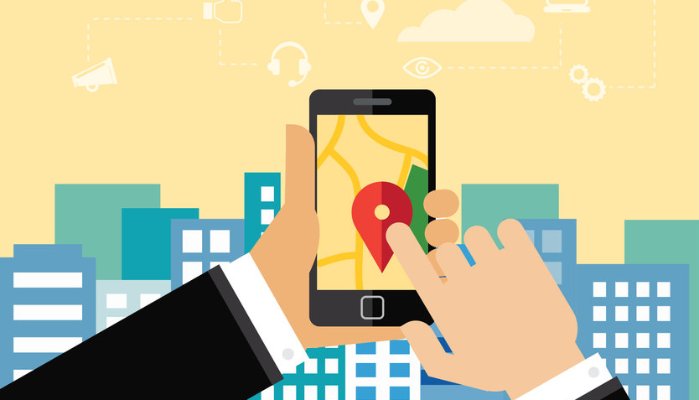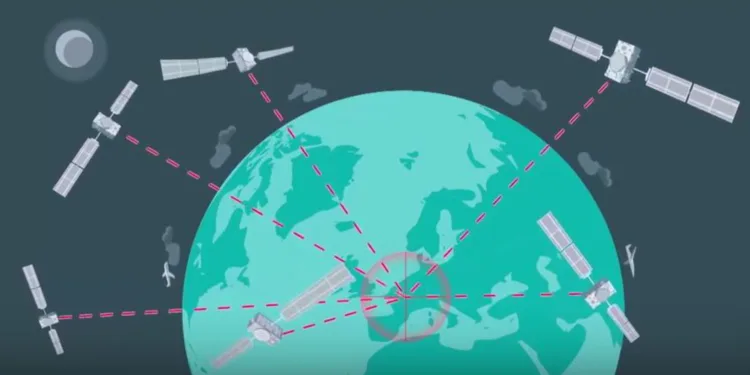Location-based services (LBS) are a growing trend that is bringing the power of maps and location to mobile apps. LBS has grown in popularity as more and more people rely on their smartphones for navigation and information. The increased use of mobile apps means that developers can now use these features right out of the box with little effort required on their part.
Apps based on location have been around for years, but the recent growth in smartphone adoption has made this trend even stronger. Here we look at the different types of LBS available and how they can help you make your app more useful by adding location functionality to it.
What are Location-Based Services?
Location-based services are apps for mobile devices that enable users to find nearby places and get location-based information about those places. Location-based apps can provide real-time information about nearby items, including weather, traffic, restaurant reviews, and more. Some location-based apps also use a device’s GPS/satellite signals to provide location-based information about nearby places.

Apps that specialize in providing location-based services can be useful for finding information about nearby restaurants, shopping, events, and more. For example, you can use Yelp to get reviews and information about nearby restaurants, or you can use Bing to see nearby events.
How do you enable location-based service in iOS apps?
When you first create a mobile app, you need to enable location service in the app’s settings. This is usually done under General settings — for example, under the iOS section in the Settings app. You can also enable location service in Interface Builder. To do this, select the “location” option under the “Interface Builder” palette.
Then, you can choose different locations, like “Home” or “Office.” In addition, you can specify the radius in which the app should be able to detect your device’s location. This can help your app to work when your device is in the car, or in a place like a busy office or a museum.
How do you enable location-based service in Android Apps?
Android apps can be activated by users to turn on location-based features in their apps. You can do this by choosing “Settings” from the app’s menu and then going to “Location.” You can also activate “Location” from the app’s main menu. Android devices have a variety of sensors that can be used to determine location. These sensors include GPS, cell towers, and WiFi triangulation.
In addition, your device’s onboard sensors like the accelerometer, gyroscope, and magnetometer can also be used to determine location. To control the accuracy of location data, you can activate “Debug mode” and turn off one or more sensors. You can also choose to “Don’t track” a device, but this will also turn off all location features in the app.
What happens when your app requests location updates?
Apps are able to access device locations when the device is either on a Wi-Fi network or is connected to a mobile network. The app then registers for location updates. If the device moves to a different network that uses a different frequency, the app will be able to receive the new location data. The app will also be able to determine if location data has become unavailable.

When your app is running in the foreground, it will broadcast location updates every so often. As a user moves between networks, their device will receive these location updates and send the location data to the app. This happens even if the network signal is weak or unavailable. Apps are also able to access location information when the user switches to another app or goes to sleep or shuts down their device. Apps can also access location data when the device is in “Background Location” mode. This allows apps to continue to function even when the device is not sending location data to the app.
LBS and privacy considerations for mobile apps
Apps that use location-based services are able to track users’ location more accurately than before. While this can be helpful for apps that provide specific location-based services, it can also be a privacy issue for users who do not want their location tracked. When an app is activated on a device, the app can request location data from the device.
If the user does not grant permission, the app will not be able to receive any location data from the device. Another privacy issue comes from the way apps access location data. Often, apps work with third-party services that have access to a user’s location. These access points can have access to a user’s location data and allow malicious parties to track a user’s movements.
Types of LBS for apps
- Internet-based Location-based services– Internet-based LBS are services that let you find nearby places based on information from online sources, such as Yelp reviews, Bing maps, and Foursquare ratings. Internet-based LBS are services that let you find nearby places based on information from online sources, such as Yelp reviews, Bing maps, and Foursquare ratings.
- GPS-based Location-based services– GPS-based LBS let you find places based on information from GPS satellites. Some GPS-based LBS let you also let you find out information about nearby items, like the weather and traffic. GPS-based LBS let you find places based on information from GPS satellites. Some GPS-based LBS let you also let you find out information about nearby items, like the weather and traffic.
- NFC-based Location-based services– NFC-based LBS let you find places based on information from nearby tags in tags. For example, some GPS-based LBS let you also let you read information about nearby tags like the temperature in Fahrenheit or Celsius.
Internet-based Location-based services

Internet-based LBS include services that let you find nearby places based on information from online sources, such as Yelp reviews, Bing maps, Foursquare ratings, and Facebook information. You can also use apps that let you read reviews and post reviews for local businesses. These services let you find places based on information from online sources, like Yelp reviews, Foursquare ratings, and Google Maps. Some of them let you also let you find out information about nearby items like the weather and traffic, similar to GPS-based LBS.
GPS-based Location-based services
GPS-based Location-based services let you find places based on information from GPS satellites. You can also view satellite images, track your location, and find nearby places or search for an address. These GPS-based LBS are useful for finding your location and getting information about nearby items, like the weather, traffic, and where you can find nearby places.
NFC-based Location-based services
NFC-based LBS let you find places based on information from nearby tags. You can also use these services to read information about tags, like the temperature of the air in Fahrenheit or Celsius. These services let you find places based on information from nearby tags, like the temperature of the air in Fahrenheit or Celsius. You can also use these services to read information about tags, like what food is nearby, like at a grocery store.
Conclusion
Location-based services are becoming a more important part of our daily lives. More and more people are using their smartphones for navigation, information, and finding nearby places, and apps are making it easy for them to get this functionality in a single app. The type of LBS you choose for your app will depend on the specific use cases for your app, but you should always consider adding location features to your app.
LBS can help your app be more useful by letting users find nearby places, get information about nearby items, and navigate to their destinations easily. For example, a restaurant app can use LBS to help users find nearby restaurants, get information about those restaurants like reviews, and help them navigate to their destination. Don’t forget to check out what we have to say about the best Utility apps on Playstore!



















